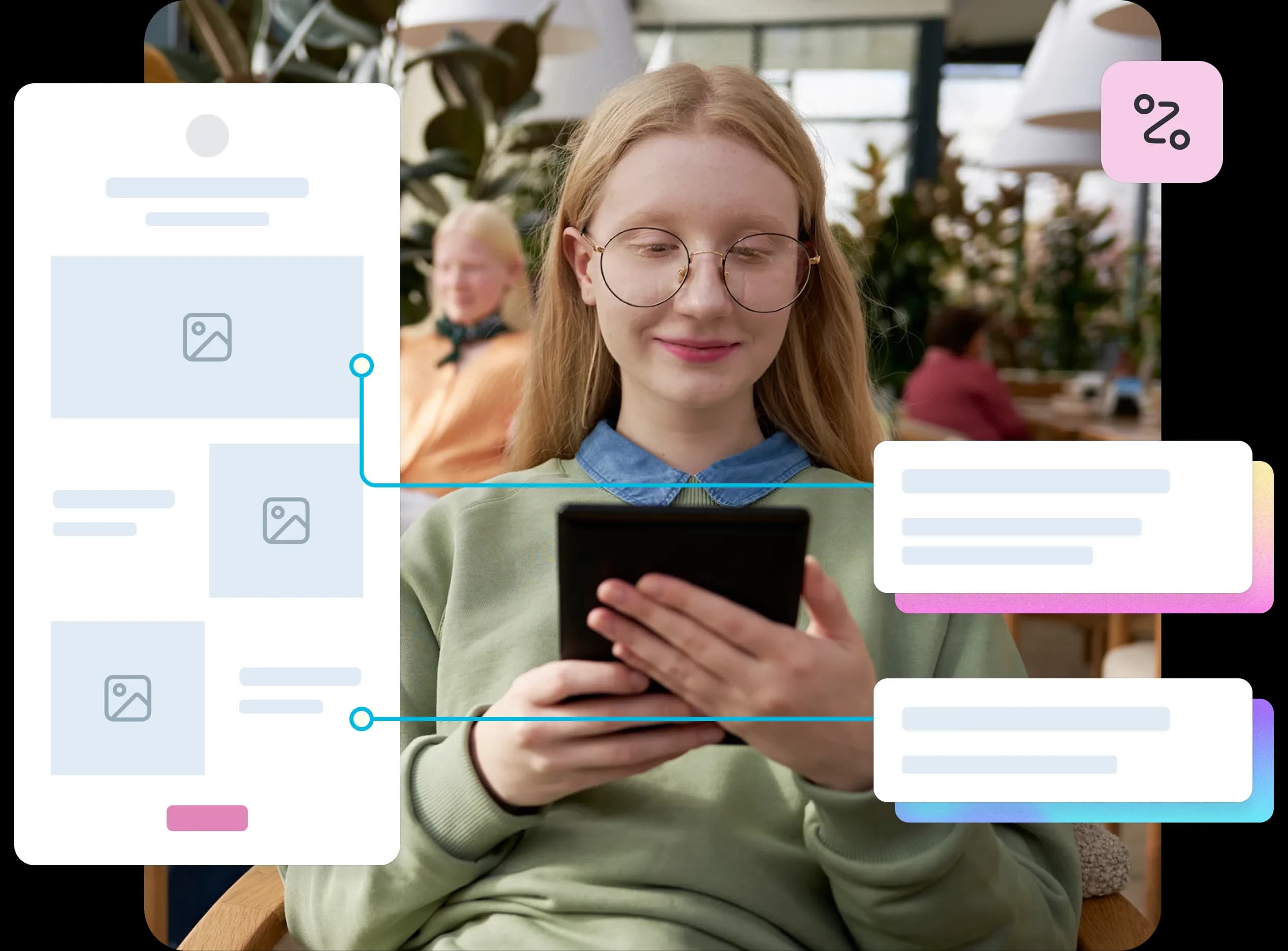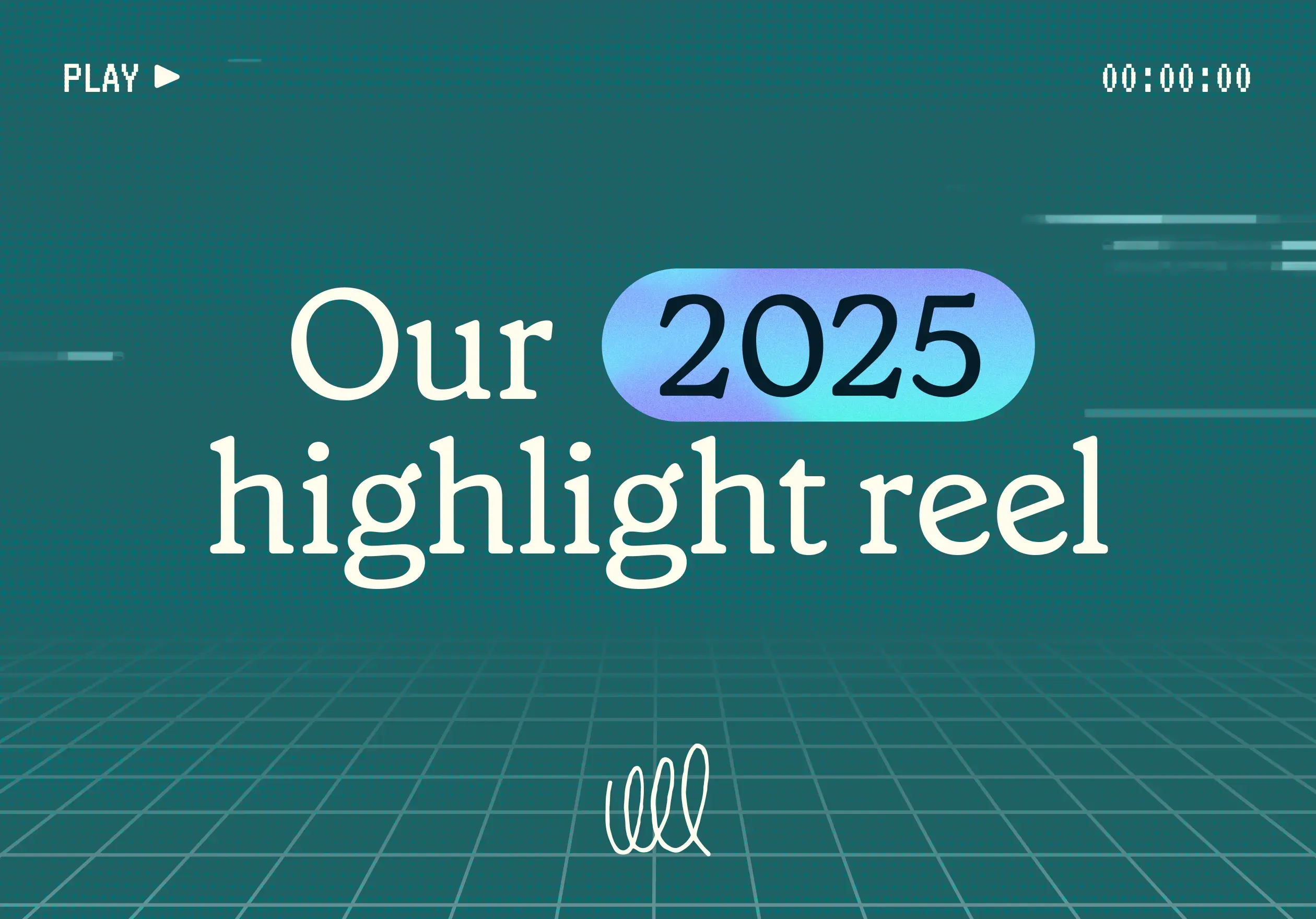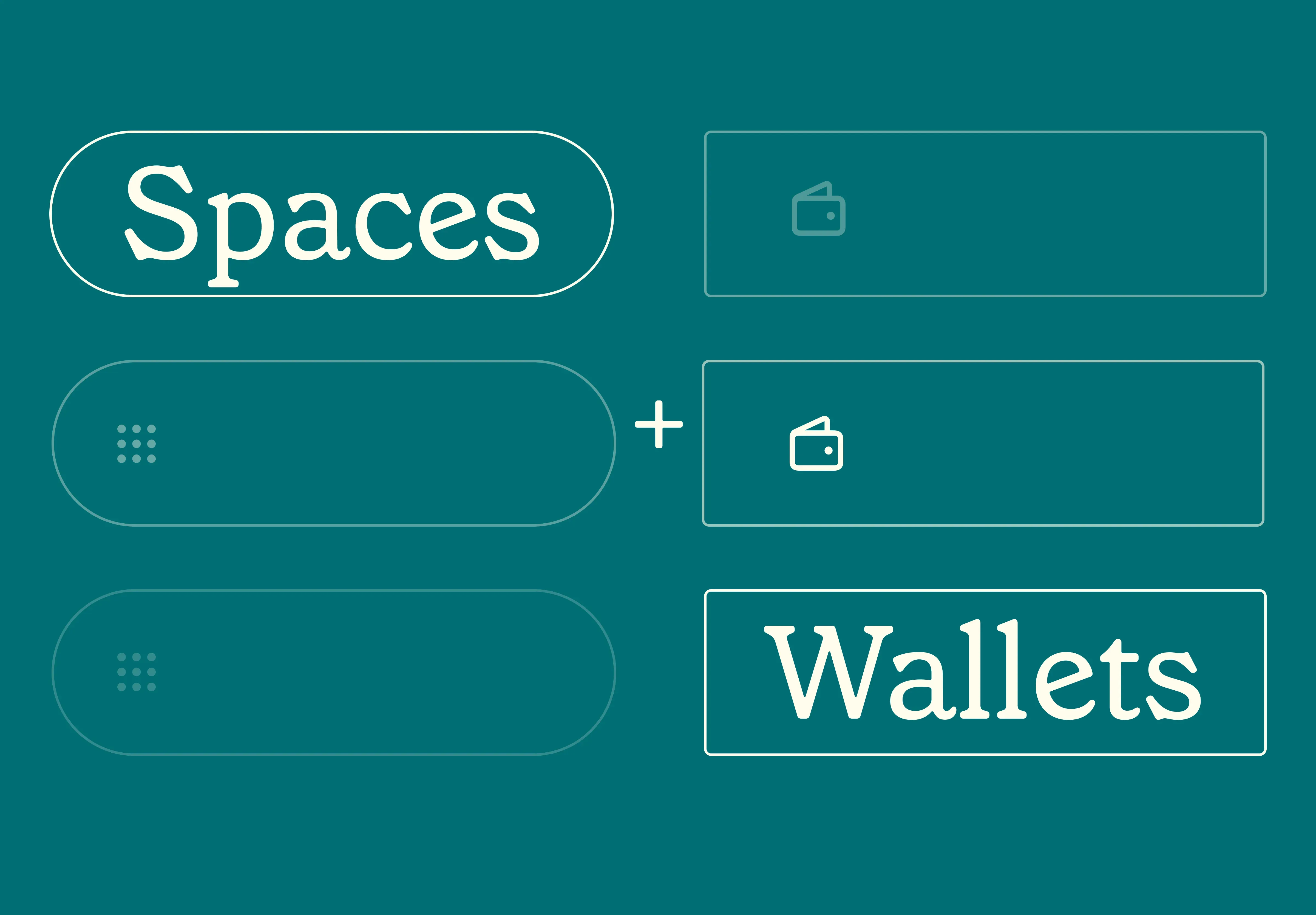21 Jul 2025
|20 min
User research report
Explore how to write a compelling user research report with practical examples, key insights, and tips to communicate UX findings that drive product decisions.

Ever wondered what happens to all that valuable user feedback you collect? Research is a core part of designing digital products, but collecting data is just the beginning. The real magic happens when you organize those insights into a clear, actionable user research report.
Whether you're talking to customers, running usability tests, or analyzing survey data, a well-crafted research report turns scattered information into something your whole team can use to make better decisions.
In this guide, we'll walk through everything you need to know about creating user research reports that actually get read and used. We'll cover the essential components and structure, plus share advanced techniques from user research consultant Michele Ronsen, who has worked with Fortune 500 companies and startups for over twenty years and was the first researcher to receive LinkedIn's TopVoices award in Technology.

What is a user research report?
A user research report is a structured document that organizes and communicates findings, insights, and recommendations from your user research studies. It transforms raw data from interviews, usability tests, surveys, or field studies into a clear narrative that helps teams make informed, user-centered decisions.
Unlike raw data or casual observations, user research reports follow a methodical approach to present what you learned about users in a way that's easy to understand and act upon. It connects what users say, do, and think to your business goals and design challenges of your product.
These reports come in various formats – from formal documents to slide presentations, videos, or interactive dashboards. The best format depends on your audience and how the information will be used.
Creating an effective research report involves unique challenges that set it apart from other phases of the research process. Michele notes that "this part of the process can be daunting in ways previous phases of the research cycle aren't. What's different are the high stakes involved, personal investment in the research, and the dynamic nature of presenting in front of an audience."
Key characteristics of a user experience research report include:
Purpose: Communicates research findings to stakeholders.
Format: Written document, presentation, or interactive dashboard.
Audience: Product teams, designers, executives, and other stakeholders.
Value: Drives evidence-based decision making and user-centered design.
The most impactful reports go beyond just describing what happened – they help everyone understand why it matters and what we can do together to improve the experience.

Collect better research data
Ready to gather insights worth reporting? Try Lyssna's user research tools free and build stronger findings.
Why user research reports are important
Have you ever seen great research insights get forgotten or ignored? That's what happens when findings aren't properly documented and shared. A user research report bridges the gap between gathering information and actually using it.
These reports serve several important purposes that help teams build better products:
They create alignment. When everyone reads the same report, the team develops a shared understanding of user needs and challenges.
They amplify the user's voice. Reports bring user perspectives into meetings and decisions where actual users can't be present.
They document decisions. A good report captures not just what you found, but why to choose certain design directions based on those findings.
They drive action. Clear recommendations help teams know exactly what to do with the research insights.
For example, a product team might learn through research that users are confused by a multi-step signup form. A research report could document this finding along with quotes from users and recommend simplifying the process. Later, if the form is changed and conversions increase, the report helps explain why that change was successful.
Without a report, valuable insights often get lost in team transitions, forgotten over time, or never reach the decision-makers who need them most.

Essential components of a user research report
A user research report typically includes several key sections that work together to tell the story of your research. Let's look at what each section should include.
Executive summary
This brief overview appears at the beginning (although we find it's often easier to write after you've crafted the rest of your report). It summarizes the most important findings and recommendations in 1–2 paragraphs for busy stakeholders who may not read the entire report.
The executive summary should answer three questions:
What was the purpose of the research?
What were the key findings?
What actions should be taken based on these findings?
Research background
This section provides context for the study and typically includes:
Research goals: What questions were you trying to answer?
Business context: Why was this research needed?
Timeline: When was the research conducted?
For example, rather than saying "We wanted to improve the checkout process," be specific: "We investigated why 60% of mobile users abandon their carts during checkout."
Methodology
The methodology section explains how you conducted your research. This builds credibility and helps others understand how you reached your conclusions.
Include:
The research methods you used: Interviews, usability tests, surveys, etc.
Participant information: How many people participated and how they were selected.
Study procedure: How the sessions were structured.
A simple table can effectively summarize your approach:
Method | Participants | Duration | Focus |
|---|---|---|---|
User interviews | 8 existing customers | 45 minutes each | Understanding current workflow |
Usability testing | 6 new users | 30 minutes each | Evaluating onboarding experience |
Survey | 150 website visitors | N/A | Measuring satisfaction with checkout |
Participant overview
This section describes who participated in your research without revealing personal identities. It helps readers understand whose perspectives are represented in the findings.
Include relevant demographics and characteristics that relate to your research questions, such as:
Age ranges
Experience levels
Job roles
Usage patterns
Visual representations like simple charts or user personas can make this information more digestible.

Key findings
This is the heart of your report – what you discovered during your research. Organize findings by themes, research questions, or user journey stages rather than by individual participants.
For each finding:
State the observation clearly.
Support it with evidence (quotes, behaviors, statistics).
Explain why it matters.
For example:
Finding: 7 out of 8 participants struggled to find the "save" button on mobile devices.
Evidence: "I've been looking for where to save this for a minute now... is it off-screen somewhere?" - Participant 3.
Impact: This confusion led to 5 participants abandoning the task completely.
Best practices for presenting findings:
Be specific: Use concrete examples rather than generalizations.
Show patterns: Highlight recurring themes across multiple participants.
Use visuals: Support findings with screenshots, journey maps, or diagrams.
Balance: Include both positive findings and areas for improvement.
Insights and opportunities
This section moves beyond observations to deeper understandings. An insight connects what users did with why they did it, revealing underlying needs or motivations.
Good insights follow this pattern:
When [situation], users [behavior] because [motivation], which leads to [consequence].
For example:
When completing forms on mobile, users often abandon the process because they can't see which fields are required without scrolling, which leads to uncertainty and frustration.
Each insight should lead to opportunities – potential ways to address the underlying need or problem.
Recommendations
Recommendations translate insights into actionable next steps. They should be:
Specific and clear.
Connected directly to research findings.
Prioritized by impact and feasibility.
For example, instead of "Improve the checkout process," recommend: "Reduce the number of required fields in the checkout form from 12 to 6 based on user feedback about form length."
Consider organizing recommendations into categories:
Quick wins: Easy changes with immediate impact.
Medium-term improvements: Moderate effort, significant impact.
Strategic shifts: Larger changes that may require more resources.

User research report example
Learning from examples is one of the best ways to understand what makes a user research report effective. Here are some hypothetical, simplified examples that demonstrate proven structures and best practices.
User research report structures
Let’s look at two different types of research reports and how to structure your findings for maximum impact.
Example 1: Ecommerce usability testing report
Here's how a hypothetical usability testing report for an ecommerce checkout process might be structured:
Executive summary
Our research shows that users abandon checkout due to unexpected shipping costs and a complicated address entry process. Simplifying these two areas could increase conversion by an estimated 15–20%.
Research background
Business goal: Reduce 60% cart abandonment rate on mobile checkout.
Research questions: What causes users to abandon the checkout process?
Timeline: Two weeks of testing with mobile users.
Methodology
Method: Moderated usability testing.
Participants: 8 existing customers, 6 new users.
Tasks: Complete a purchase using mobile checkout flow.
Duration: 30 minutes per session.
Key findings
Hidden shipping costs create frustration: 7 out of 8 participants expressed surprise at shipping costs appearing only at the final step.
Address entry is cumbersome: Participants took an average of 3 minutes to complete address fields, with multiple corrections needed.
Payment options unclear: 5 participants didn't notice alternative payment methods below the fold.
Recommendations
Quick win: Display shipping costs upfront on product pages.
Medium-term: Implement address autocomplete functionality.
Strategic: Redesign payment section with better visual hierarchy.
This structure demonstrates how effective user research reports lead with impact and include specific evidence to support each finding.

Example 2: Mobile app user interview report
Here's how a hypothetical user interview report for a productivity app might look:
Executive summary
Users struggle with task prioritization in our current interface. Adding visual priority indicators and daily focus suggestions could improve task completion rates by an estimated 25%.
Research background
Business goal: Understand why daily active usage dropped 15% over six months.
Research questions: How do users currently manage their daily tasks? What prevents them from completing planned work?
Timeline: Three weeks of interviews with existing users.
Methodology
Method: Semi-structured user interviews.
Participants: 12 active users across different industries.
Focus: Daily workflow patterns and pain points.
Duration: 45 minutes per session.
Key findings
Priority confusion creates paralysis: 9 out of 12 participants reported difficulty deciding which tasks to tackle first each day.
Overwhelming task lists: Users with more than 20 tasks showed 40% lower completion rates.
Missing context switching: Participants lost momentum when moving between different types of work.
Recommendations
Quick win: Add visual priority indicators (high, medium, low).
Medium-term: Implement "daily focus" feature suggesting 3 priority tasks.
Strategic: Create project-based task grouping to reduce context switching.

Report formats for different audiences
As Michele points out, "The nature of your research – whether it's a lightweight usability study or a comprehensive generative study – should inform your approach, as should the culture of the organization. Tailor your deliverables to meet the specific needs and expectations of your audience."
Different stakeholder groups need different levels of detail from your research report. Here are examples of how the same hypothetical research could be presented in multiple formats:
Slide deck presentation format
Audience: Mixed stakeholder groups (designers, product managers, executives).
Length: 15-20 slides.
Focus: Visual storytelling with key quotes and video clips.
Strength: Great for live presentations and generating discussion.
Written report format
Audience: Implementation teams and future reference.
Length: 8-12 pages.
Focus: Detailed methodology and comprehensive findings.
Strength: Thorough documentation for long-term use.
Executive summary format
Audience: Leadership team.
Length: 1–2 pages.
Focus: Business impact and high-level recommendations.
Strength: Quick consumption for decision-makers.
What makes for an effective user research report?
The examples above demonstrate several characteristics of successful user research communication:
Clear problem framing: In our hypothetical ecommerce example, the 60% cart abandonment rate immediately establishes why the research was necessary and what success would look like.
Evidence-based insights: Rather than general observations, effective reports include specific evidence like "7 out of 8 participants expressed surprise at shipping costs" or "participants took an average of 3 minutes to complete address fields."
Actionable recommendations: The best reports don't just identify problems, they provide clear next steps organized by effort level (quick wins, medium-term improvements, strategic changes).
Stakeholder-appropriate detail: Notice how the executive summary focuses on business impact while the full report includes implementation details for design and development teams.
User research report templates
If you're looking for practical templates to structure your own reports, here are some good places to start:
How to analyze user research data
Before you can write a great report, you need to analyze your research data effectively. This process turns raw observations into meaningful patterns.
1. Organize your raw data
Start by gathering all your research materials in one place:
Interview transcripts or notes.
Usability test recordings.
Survey responses.
Field observations.
2. Identify patterns and themes
Look for recurring behaviors, comments, or issues across multiple participants. Some effective techniques include:
Affinity mapping: Write observations on sticky notes (physical or digital) and group similar ones together to identify themes.
Highlighting and coding: Mark key quotes or observations in transcripts and assign them to categories.
Quantifying qualitative data: Count how many participants experienced the same issue or expressed similar opinions.
When analyzing patterns, remember to:
Look for both expected and unexpected behaviors.
Note both positive and negative experiences.
Consider the context of each observation.
3. Validate your findings
Before finalizing your findings, check their validity by:
Comparing patterns across different research methods.
Looking for conflicting information.
Considering alternative explanations.
Checking against existing data or analytics.
This critical step helps make sure your report reflects what's actually happening rather than what you expected to find.

Transforming findings into actionable insights
The most valuable research reports go beyond just reporting what happened – they explain why it matters and what to do about it. This requires transforming raw findings into actionable insights.
The finding-to-insight process
Follow these steps to develop meaningful insights:
Start with a clear finding: "6 out of 8 participants couldn't find the account settings on the dashboard."
Ask why this happened: Was it the placement? The labeling? The visual hierarchy?
Connect to user goals: What were users trying to accomplish when they encountered this issue?
Consider the broader impact: How does this affect the overall user experience and business goals?
Frame as an insight: "Users struggle to find account settings because they expect them in the top navigation rather than the side menu, causing frustration and increasing support requests."
Show contrast for impact: Michele recommends demonstrating contrasts in your reports. "Show the pain points and the opportunities to solve them. Showcase the emotional and the rational." This technique helps stakeholders understand not just what's happening, but why change is necessary. Try pairing current user frustrations with proposed solutions, or rational data with emotional user quotes.
Making insights actionable
For each insight, brainstorm possible solutions or opportunities. Ask:
How might we address this underlying need?
What are different ways to solve this problem?
Which solution best balances user needs with business goals?
For example:
Insight: Users abandon long forms because they can't see how much information is required upfront.
Opportunities:
Add a progress indicator showing total steps.
Break the form into clearly labeled sections.
Show all fields on one scrollable page with a "time to complete" estimate.
User research report best practices
Even experienced researchers can fall into these common traps when creating reports.
Information overload
Problem: Including too much raw data or every minor finding.
Solution: Focus on the most important insights that directly answer your research questions.
Before: "Participant 1 said... Participant 2 mentioned... Participant 3 noted..."
After: "7 out of 8 participants expressed confusion about the pricing structure."
Missing context
Problem: Presenting findings without explaining why they matter.
Solution: Connect each finding to user goals and business objectives.
Before: "Users didn't click on the help icon."
After: "Users didn't notice the help icon because it blended into the background, preventing them from getting assistance when stuck."
Vague recommendations
Problem: Suggesting changes that are too general to implement.
Solution: Make recommendations specific and actionable.
Before: "Improve the navigation."
After: "Consolidate the current 8 top-level navigation items into 5 categories based on user mental models from card sorting."
Bias confirmation
Problem: Focusing only on findings that support your existing beliefs.
Solution: Actively look for contradictory evidence and include it in your report.
Visual deficiency
Problem: Creating text-heavy reports that are difficult to scan.
Solution: Use visual elements like charts, screenshots with annotations, and journey maps to illustrate key points.

Presenting research to different stakeholders
Different audiences need different levels of detail from your research report. Adapting your presentation to your audience increases the chances your findings will be understood and used.
You can use the below table as a guide when deciding which format to choose depending on your audience.
Stakeholder | Format | Length | Focus | When to use |
|---|---|---|---|---|
Executives | Executive summary | 1–2 pages | Business impact | Quick decisions needed |
Design team | Slide deck | 15–20 slides | Visual insights | Collaborative sessions |
Development | Written report | 8–12 pages | Technical details | Implementation reference |
Mixed audience | Workshop | 60–90 minutes | Interactive discussion | Buy-in needed |
For executives and decision-makers
These stakeholders need the big picture and business impact:
Focus on key insights and recommendations.
Connect findings to business metrics and goals.
Keep it brief (5–10 minutes for presentations).
Lead with the most important findings.
Use visuals that show patterns and trends.
For product and design teams
These stakeholders need more tactical information:
Include specific examples and user quotes.
Show the evidence behind your insights.
Discuss implementation considerations.
Use videos or screenshots of actual user behavior.
Allow time for questions and discussion.
Presentation formats
Consider these different ways to share your findings:
Written report: Comprehensive documentation for reference.
Slide presentation: Visual summary for meetings.
Workshop: Interactive session to discuss implications.
Video highlights: Brief clips showing key user behaviors.
Research wall: Physical or digital space displaying key findings.
Remember that the most effective research communication often combines multiple formats.
If you're presenting research live, Michele recommends transforming "passive listeners into active attendees" through polls, Q&A sessions, workshop activities, and role-playing exercises. Interactive demos offer hands-on understanding and can spark innovation and empathy among stakeholders.
Make your research memorable: Michele once gave an entire presentation using tomato illustrations, playing on "You say tomaTOE, I say toMAH-to." Years later, people still call it the "tomato deck." The lesson? Creative visual metaphors and humor (when appropriate) make research findings stick. Consider how you can use unexpected visuals, New Yorker-style cartoons, or even memes to make your insights unforgettable.
If you're looking for more research presentation tips, check out our workshop below.
Making your research report drive action
The ultimate goal of any user research report is to influence decisions and drive improvements. Here are strategies to make sure your report leads to action.
Setting strategic goals for your user research report
According to Michele, understanding your strategic intent is crucial for selecting the right format and crafting messages that resonate. She identifies four common reporting goals:
Inform/share: Basic goal to update stakeholders on research conducted and findings.
Build credibility/persuade: Include memorable insights and aim to persuade specific actions.
Choose/act: Present options and inflection points for collaborative decision-making.
Immerse/bring participants to life: Use quotes, video clips, and personas to foster empathy.
Clarifying your primary goal helps determine the necessary time, resources, and format for maximum impact.

Connect insights to current projects
Show how your findings relate to work that's already planned or in progress. This makes it easier for teams to incorporate your recommendations.
Prioritize recommendations
Not everything can be fixed at once. Help teams understand:
Which issues affect the most users.
Which problems have the biggest impact on user success.
Which fixes might be quickest to implement.
A simple impact/effort matrix can help visualize priorities:
High impact, low effort: Do these first.
High impact, high effort: Plan these for future sprints.
Low impact, low effort: Consider if time allows.
Low impact, high effort: Probably not worth pursuing.
Here's a recommendation prioritization framework to consider:
Priority level | Impact | Effort | Timeline | Example |
|---|---|---|---|---|
Quick wins | High | Low | 1–2 weeks | Fix broken links |
Strategic | High | High | 3–6 months | Redesign checkout |
Nice-to-have | Low | Low | When time allows | Color updates |
Avoid | Low | High | Never | Complex features few want |
Follow up systematically
Research impact doesn't end when you deliver the report:
Schedule check-ins to discuss implementation progress.
Offer to help clarify findings as teams work on solutions.
Plan follow-up research to validate that changes have addressed the issues.
Build a research repository
Make your research findings accessible for future reference:
Store reports in a central location (like a dedicated research repository).
Tag them with relevant topics.
Create a searchable database of insights.
Share access with all team members who might benefit.
Turn your report into a time capsule: Think of your research report as "a gateway to the past for the future," suggests Michele. Your report should answer the question: "What were our thoughts and reasoning at that time?" This perspective helps you include crucial context and decision-making rationale that future team members (including your future self) will need when building on your research.
Start gathering quality data
Great reports need great data. Try Lyssna free to collect user feedback that creates compelling research stories.
FAQs
You may also like these articles


Try for free today
Join over 320,000+ marketers, designers, researchers, and product leaders who use Lyssna to make data-driven decisions.
No credit card required






